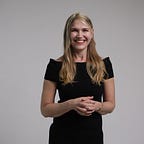Fail Fast-Fail Often
Does an ethos of “fail fast” negate conventional, purposeful productivity? In tech, some say “Fail Forward” others say “Fail Better” or “Fail Fast and Fail Often.” Regardless, the common denominator is failure (Ashgar, 2014). Pferdt (Harsimran, 2016), head of Google’s Innovation and Creativity programs and co-founder of The Garage (n.d.) stated that in Silicon Valley no one wants to fail. They want to learn.
Ashgar (2014) argued that “fail” in any sort of work mantra is irresponsible and disingenuous. Surowiecki (2014) stated that current entrepreneurial culture glibly celebrates failure when in fact “past failure is a strong predictor of future failure.” Responsible management must know when to put away the party poppers for the ‘Yippee you failed!’ celebrations and get down to business.
Hamel (2009) argued that management today has the daunting and urgent task of balancing creativity and innovation with focused and purposeful efficiency and effectiveness. Ashgar (2014) argued that resilience, not failure, should be embraced. Indeed, learning to learn from mistakes is crucial.
Too Old to Code? Ageism
Will individuals that are creative in a non-Google way; slow and methodical in innovation and creation, find a home in the fast-paced tech world? Is coding something in the DNA of those born in the 1980s? Doubt it. Furthermore, not every job in the tech industry involves coding (something anyone can learn): there are software engineers, accountants, HR, etc…
It is an open secret; diversity has no place in Silicon Valley. In 2013, at 52 years of age Lyons (2016) went to work at HubSpot and soon discovered that his age, maturity and experience carried little weight. Halligan, CEO of Hubspot, derided office place diversity when he said he preferred young people and that “in the tech world, gray hair and experience are really overrated” (Bryant, 2013).
Zuckerberg (2007) once stated that “young people are smarter” and more technical and “old people” (those over 30) are slow. Granted, Zuckerberg was only 22 at the time he was quoted. However, if early hiring practices at Facebook were predicated on the founder’s belief that young and tech-savvy is best, it stands to reason that this belief still permeates the organization’s culture.
Google is not immune to ageism. As a warning to Silicon Valley corporate culture and hiring practices, a judge presiding over a class-action lawsuit against Google for age discrimination asked “What does age have to do with one’s Googlelyness” (Thibodeau, 2016).
http://youtube.com/watch?v=21-sqdmIGhM
Fast forward to 8:11 for a brief account of a lawsuit against Google where a former 54-year-old Google employee was harassed and routinely called “old man” (Ezer, 2014).
Innovate Gate!
Does an emphasis on creativity and innovation increase stress to impress? Google’s 20% policy is meant to remove barriers to allow for freewheeling innovative thinking. Google’s 20% policy is not policed and Googlers are free to take advantage of it. Admittedly, if results and participation in the 20% program fell within the realm of formal management oversight counterproductive competition would ensue. However, without guidelines, Kotter (2013) argued that free time will not produce results in line with Google’s corporate strategy. Kotter (2013) suggested the following guidelines for Google:
1. Urgency without alignment is wasted energy
2. Aligned urgency in action means that individuals are intrinsically motivated
3. Focused free-thinking builds “a change engine” into corporate culture
References
Ashgar, R. (2014) Why Silicon Valley’s ‘fail fast’ mantra is just hype. Available from: http://www.forbes.com/sites/robasghar/2014/07/14/why-silicon-valleys-fail-fast-mantra-is-just-hype/#7463b5112236 [Accessed 17th November 2016]
Bryant, A. (2013) Brian Halligan, chief of HubSpot, on the value of naps. Available from: http://www.nytimes.com/2013/12/06/business/brian-halligan-chief-of-hubspot-on-the-value-of-naps.html [Accessed 17th November 2016]
Ezer, J. (2014) The brutal ageism of tech [Online Video]. Available from: http://youtube.com/watch?v=21-sqdmIGhM [Accessed 17th November 2016]
Hamel, G. (2009) Moon shots for management. Harvard Business Review, 87 (2), 91–98, Business Source Complete, EBSCOhost. Available from: https://liverpool.idm.oclc.org/login?url=http://search.ebscohost.com/login.aspx?direct=true&db=bth&AN=36197171&site=eds-live&scope=site [Accessed 17th November 2016].
Harsimran, J. (2016) What if you change your yes-but mindset to a yes-and one, asks Google innovation head. Available from: https://www.techinasia.com/google-stay-startup-70000-employees [Accessed 17th November 2016]
Kotter, K. (2013) Google’s best innovation: rules around ‘20% time’. Available from: http://www.forbes.com/sites/johnkotter/2013/08/21/googles-best-new-innovation-rules-around-20-time/#58cfd63b68b8 [Accessed 17th November 2016]
Lyons, D. (2016) My year in startup hell. Fortune International (Europe), 173 (5),108, Business Source Complete, EBSCOhost. Available from: https://liverpool.idm.oclc.org/login?url=http://search.ebscohost.com/login.aspx?direct=true&db=bth&AN=119241793&site=eds-live&scope=site [Accessed 17th November 2016].
Surowiecki, J. (2014) Epic fails of the startup world. Available from: http://www.newyorker.com/magazine/2014/05/19/epic-fails-of-the-startup-world [Accessed 17th November 2016]
The Garage .(n.d.) Work smart: go inside Google Garage, the collaborative workspace that thrives on crazy, creative ideas. Available from: https://www.fastcompany.com/3017509/work-smart/look-inside-google-garage-the-collaborative-workspace-that-thrives-on-crazy-creat [Accessed 17th November 2016]
Thibodeau, P. (2016) Google dealt setback in age bias case by judge interested in ‘Googleyness.’’ Cio (13284045), p. 1, Business Source Complete, EBSCOhost. Available from: https://liverpool.idm.oclc.org/login?url=http://search.ebscohost.com/login.aspx?direct=true&db=bth&AN=118711413&site=eds-live&scope=site [Accessed 17th November 2016].
